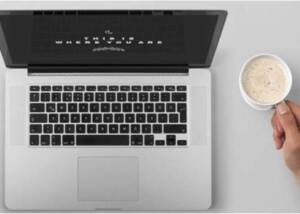The new GEA PowerPak PLUS technology – now with more sustainable packaging alternative using paper
News General news
The GEA PowerPak PLUS thermoforming packaging machine lends itself to a range of different packaging solutions, including handling protection, vacuum, MAP and shrink packaging. GEA has recently added a new dimension of versatility to the PowerPak PLUS by making it possible to use a more sustainable paper-based packaging alternative with this technology. The new packaging option is made from a moldable paper composite consisting of more than 80 percent paper and a residual amount of plastic for features that deliver barrier properties. Thanks to technological advances, the machine can be fully relied on to safely process this delicate material.

“The packaging market is currently in a state of flux,” explains Volker Sassmannshausen, Senior Product Manager Thermoforming Packaging Systems at GEA. “While consumers and food retailers are demanding reductions in plastic usage, the food industry must ensure safe packaging from beginning to end of the supply chain. Not only must all hygiene and quality standards be met, but also legal requirements which call for a significant reduction in the amount of plastic used in packaging. When developing our machines, we always take our cues from what our customers need, so this was an obvious focus area for us.”
Problem-free paper forming
The GEA thermoformer ensures the highest packaging quality, efficiency and consumer convenience. Thanks to technical modifications, this packaging machine can now also easily mold coated paper. A series of functions, including those dedicated to unwinding and feeding the delicate materials as well as the newly developed multi-zone heating system, which is paired with sophisticated sealing, ensure that fresh foods are safely and hygienically packaged. In turn, solutions to simplify pack opening and material separation make it easy for consumers to separate the paper from the plastic for disposal in their relevant recycling streams.
In the forming station, the multi-zone heating system warms the coated paper to the precise temperature required so that it’s ready for molding via vacuum and compressed air. This produces thermoformed packs of around 20 millimeters in height, into which the precut slices are inserted in the next step. Before the packs are separated, a very thin top film – measuring just 30 to 50 micrometers thick – is used to close and seal each pack.
The key advantage of GEA’s PowerPak PLUS thermoforming packaging machine lies in its motor-driven unwinding systems for the top and bottom films. Both unwinding systems are synchronized with the machine’s advancing cycle. This means that only minimal force is applied to the paper solution and the top film, which are unwound in a controlled and uniform manner. In addition, the membrane sealing system ensures tight and even seals.
Material separation made easy
For consumers to be able to properly dispose of packaging, it is essential that the diverse materials – in this case paper and plastic – are easy to separate. To achieve this, GEA has integrated a device for punching peel corners into the thermoformer’s molding tool. The user simply bends the top corner to separate the thin plastic film from the paper backing before dispose both materials into their respective recycling stream.
Spotlight on sustainability
The demands on packaging are many. Consumers expect packaging to be recyclable and more sustainable. Packaging systems must also meet requirements in terms of effectiveness, safety and flexibility, in addition to meeting demands for the efficient use of energy and resources. “It’s great to see that we can mold paper-based materials without any difficulty,” states Sassmannshausen. “Our paper-composite packaging solution is already successfully used and these products are now on supermarket shelves there. We’re proud that we’re able to make an important contribution to producing more sustainable food packaging.”










